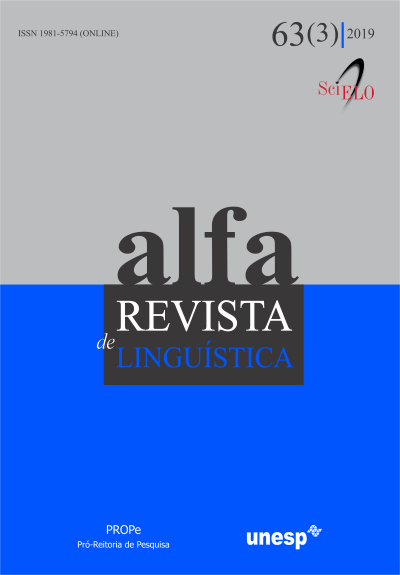Cleft sentences in Mazahua (Oto-manguean)
DOI:
https://doi.org/10.1590/1981-5794-1911-2Keywords:
Information, Focus, Topic, Structure, Otopamean,Abstract
The purpose of this paper is to describe the structure of the cleft sentences in the Mazahua language of San Pedro Potla (located in Temascalcingo, Estado de Mexico). This study has been carried out under the approach of Lambrecht (2001), who considers that the cleft sentence is a complex structure formed by a matrix clause and a relative clause; this binary clause expresses a single semantic proposition. Considering the latter, cleft sentences are formed by the ŋɡè mark, the focused phrase and the relative clause. To give an account of the objective, it is necessary to consider certain features of the grammar of the language as word order, types of relative clauses, and grammatical functions of ŋɡè. Through the types of cleft sentences it can be shown that, in some contexts, the topicalized information also appears clefted. The data correspond to stories, narrations, and tales.
Downloads
Downloads
Published
How to Cite
Issue
Section
License
Manuscripts accepted for publication and published are property of Alfa: Revista de Linguística. It is forbidden the full or partial submission of the manuscript to any other journal. Authors are solely responsible for the article's content. Translation into another language without written permission from the Editor advised by the Editorial Board is prohibited.

